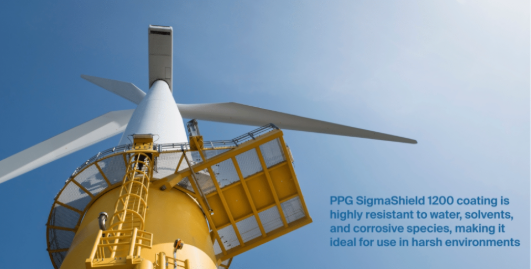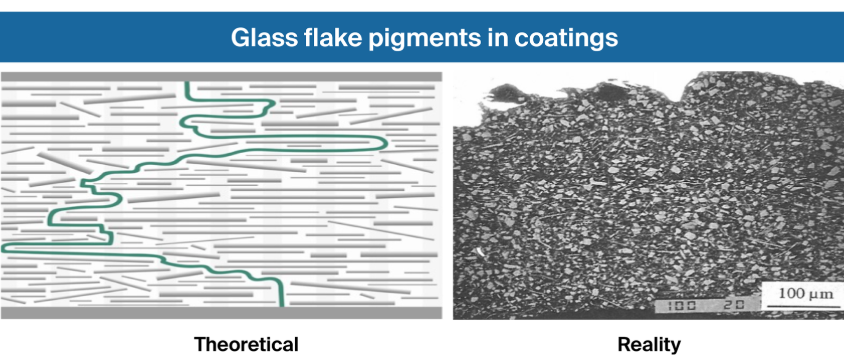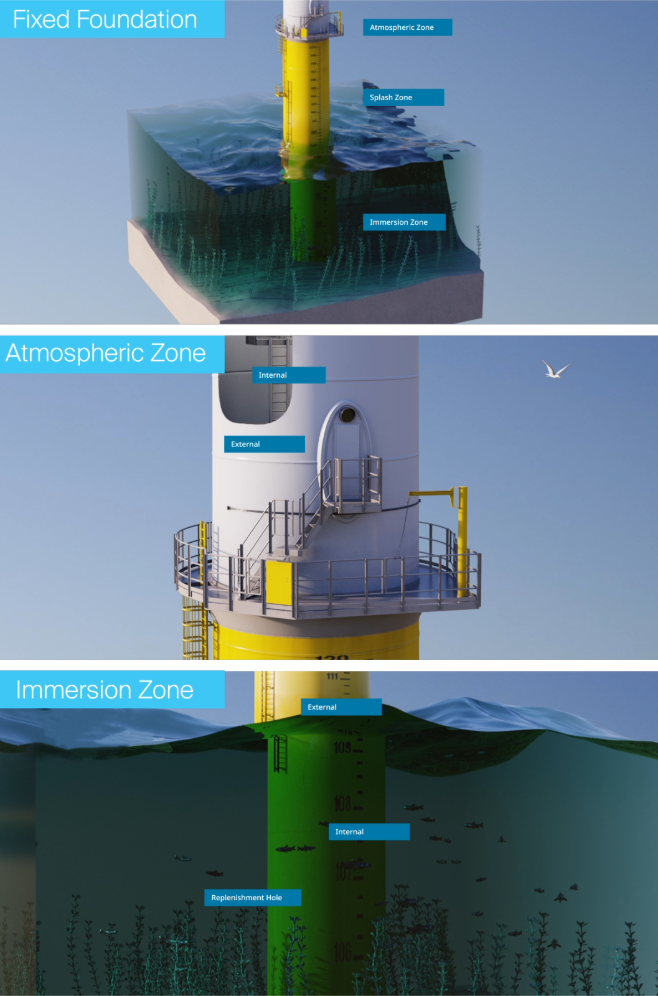Published 28 June 2024
Efforts to combat climate change drive the growth of renewable energy technologies as governments and utility companies increase investments in solar and wind installations to meet rising electricity demands. Onshore wind is a well-developed market, while offshore wind is beginning to expand due to its high production efficiency and significant energy production potential. According to the
International Energy Agency, global offshore wind capacity is projected to increase fifteen-fold by 2040.
.png)
Environmental challenges
The construction and operation of offshore wind parks require significant capital expenditure due to the difficult installation and harsh environmental conditions. In 2023,
BloombergNEF reported that global offshore wind investment totaled more than $76 billion worldwide. To protect these mega investments, offshore wind development requires powerful, durable towers with long service lives. Effective anti-corrosion protection is essential for wind towers that must withstand the relentless fluctuations of tides, weather, and wind in locations increasingly further from land.
There are a variety of coating technologies suited for these challenging marine environments. Reinforced epoxy and glass-flake unsaturated polyester coatings are two such systems that have undergone extensive testing under ASTM, NORSOK, and ISO international standards to measure their performance in demanding marine applications.
Offshore wind turbines face multiple types of exposure, including the complete seawater immersion zone, the splash or tidal zone, and the atmospheric zone. In the immersion and splash zones, the wind tower foundation faces erosion from the sand and impacts from maintenance vessels, ice, or other floating debris. Marine fouling can occur when algae, mussels, and barnacles adhere and damage protective coatings. Above the water, the atmospheric zone is exposed to saline atmospheric conditions. Coatings applied to this part of the tower must resist cracking due to flexural stresses and temperature variations.
Coating chemistries
Coating technologies employ various methods to protect substrates from corrosion. Glass flakes act as barriers and are recommended by some suppliers for protecting areas exposed to splashing water and tidal influences. Glass flakes are used in unsaturated polyester to improve water resistance. However, these technologies are not essential for epoxy coatings, which can achieve enhanced water and chemical resistance through the use of denser, cross-linked resins and advanced curing agents like novolac technology and new amine technology.
_1.png?height=362&width=627)
Two-pack unsaturated polyester coatings are made from unsaturated polyester resin cured by a peroxide catalyst. Laminar glass flakes are added to fortify the polymer matrix due to resin’s inherent poor water resistance. These high amounts of glass flakes increase the coating’s viscosity, and reactive diluents like styrene or vinyl toluene are needed. Styrene-free unsaturated polyester (UPE) glass flake coatings have recently been introduced to mitigate the strong smell associated with styrene and make the application process more user-friendly.
The strength of these crosslinked matrices greatly affects the coating’s protective capabilities when exposed to alkalis and solvents. Cathodic protection (CP) systems are often installed in submerged metal structures to protect against corrosion. When the system is activated, the electric decomposition of water molecules creates an alkaline environment. In addition, stationary seawater inside the wind tower foundation gradually increases pH. When seawater remains uncirculated inside the wind tower foundation, this alkaline environment should be considered when selecting the coating system because such environment is harsh to coating systems.
Measuring performance
In such demanding conditions, offshore wind coatings must demonstrate reliable performance on key metrics such as abrasion resistance, cathodic dis-bonding, impact damage, and elasticity. The following section will review internal test results and field data comparing two-pack epoxy and UPE coatings.
First, abrasion resistance is measured with Taber abrasion testing following ASTM D4060. In a test of 1,000 abrasive cycles, the styrene-free UPE coating lost more than double the material by abrasion than the reinforced novolac epoxy coating, showing that it is significantly less resistant to abrasive forces.

Damage to the coating surface from abrasion or impacts can activate CP systems. Sensitivity to cathodic dis-bonding is tested according to ASTM G8. Various dry films and thicknesses were exposed to artificial seawater and –1,500-millivolt potential. After 90 days, results showed that the styrene-free UPE coating had a significantly higher sensitivity to cathodic dis-bonding than the reinforced novolac epoxy coating. It also showed blister formation, likely due to the saponification of the polyester resin caused by the alkalinity generated by CP system activation.

In the most corrosive area of the wind tower foundation, the splash zone includes exposure to seawater and saline atmospheric conditions with variable temperatures. Coating systems should comply with the NORSOK M-501 System 7A performance criteria, which addresses the protection of carbon and stainless steel in the splash zone. Both styrene-free UPE coatings and reinforced novolac epoxy coatings can fulfill these test criteria.

Temperature changes, together with the flexural stresses and vibrations from the wind tower’s dynamic loads, can contribute to stress cracking. Coatings with stronger elastic properties are ideal for wind tower foundations. Tensile strength and strain at break were tested following ASTM D638 and D2370 with free paint films of about 1,000 microns after a three-month cure at ambient conditions. In both tests, the reinforced novolac epoxy coating showed significantly better elastic properties than the styrene-free UPE coating.

The splash zone is also where impact damage can occur. To test coating system strength, panels with a film thickness of about 500 microns received various impact forces from 3 to 10 Joules, according to the ISO 6272-1 test method. The panels were then exposed to salt spray testing following ASTM B117 for seven days. The styrene-free UPE coating with glass flakes showed more corrosion and adhesion loss around the impacted areas than the novolac epoxy coating reinforced with alternative pigments, which showed no evidence of corrosion.
Conclusion
Offshore wind is transforming. Once a relatively small portion of wind power, offshore wind is reaching new heights with technological advancements, geographic diversity, and increased investment. To realize the full potential of offshore wind, turbines continue to grow larger and produce more clean energy. The harsh conditions of offshore wind parks mean that protective coatings are integral to wind tower design. Effective coating systems protect substrates and minimize damage from erosion, extreme weather, and corrosion.
From initial construction to long-term maintenance practices, coating systems are influential in prolonging service life and reducing repair costs. With multiple coating options available for offshore wind towers, stakeholders should carefully examine their qualifications and performance results to choose the ideal system for these demanding but incredibly valuable applications.
Click here to view PPG’s 3D wind power coating selector.
C.Y. Lee is PPG global product support manager for Protective & Marine Coatings.
Originally published in Power Magazine.
.png)
.png?height=996&width=627)
_1.png?height=362&width=627)




